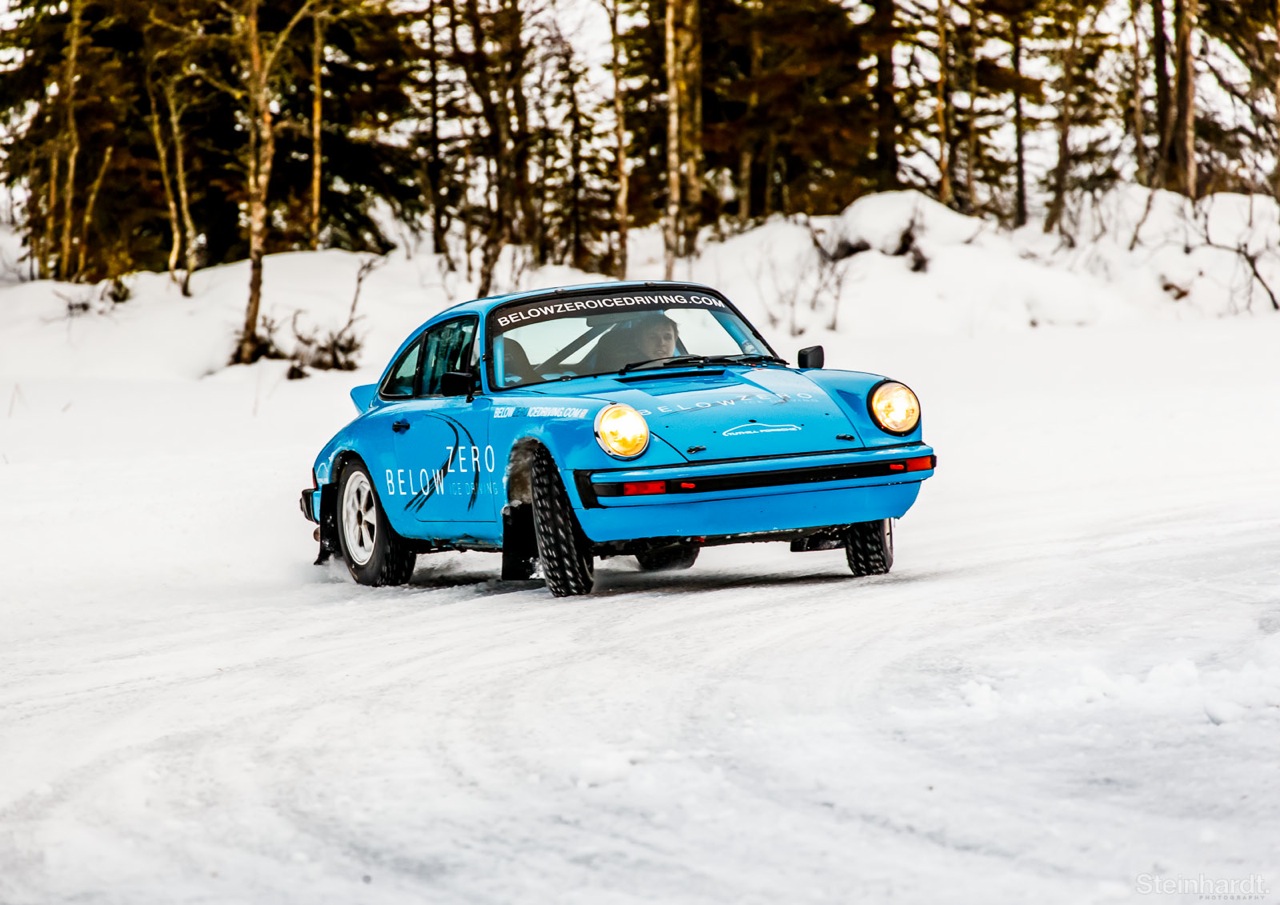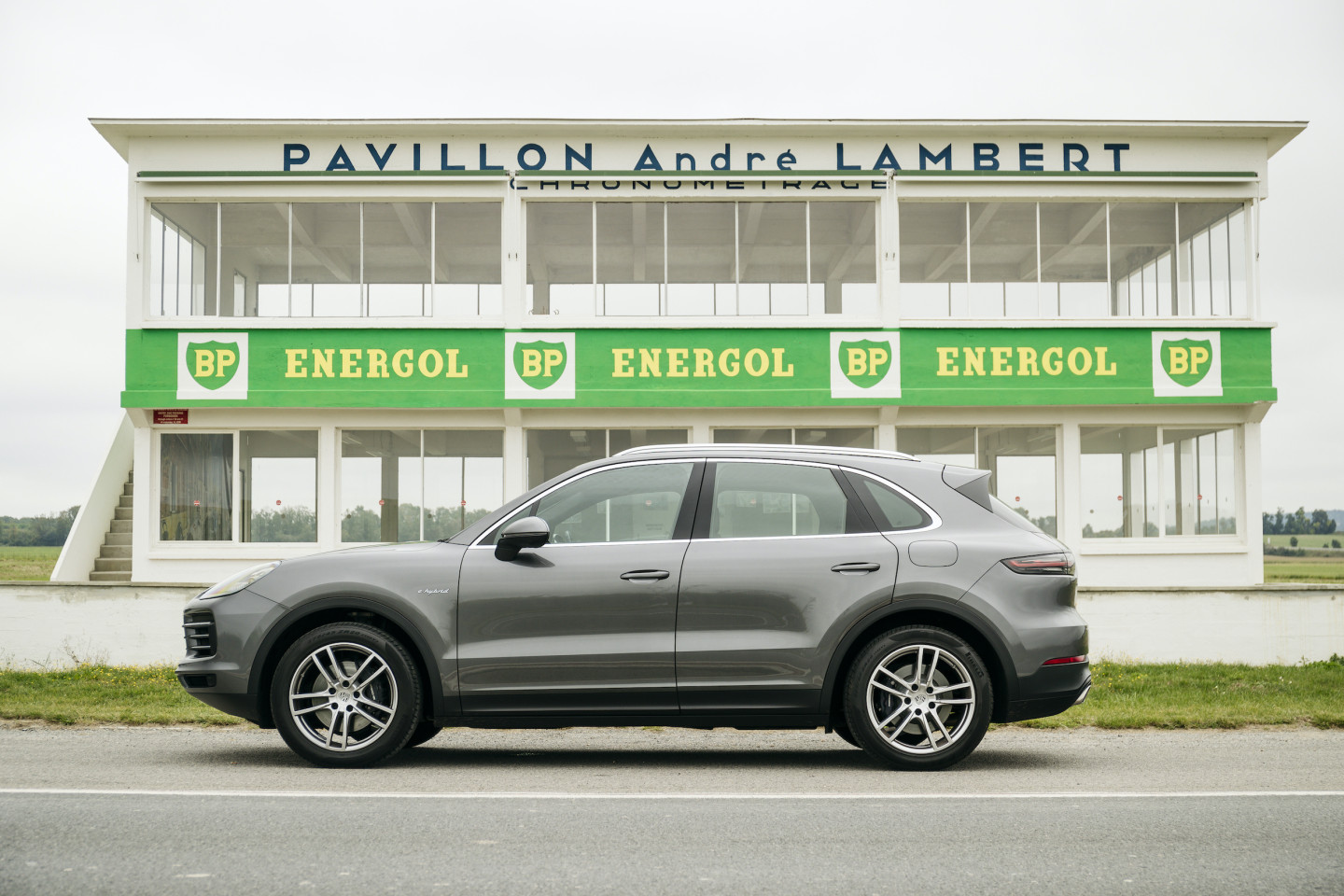 By Lee Sibley
3 years ago
By Lee Sibley
3 years ago
2021 Porsche Cayenne e-hybrid review
9WERKS takes the latest plug-in Porsche on a pan-European road trip to view the very first hybrid vehicle…
Did you know Porsche built the world’s first fully operational hybrid vehicle? Unbelievably, this was back in 1900: the Lohner-Porsche “Semper Vivus” boasted a petrol-electric mixed drive, whereby two combustion engines powered an electric generator, which supplied the wheel-hub motors with electricity. Porsche presented a prototype at the 1901 Paris Motor Show.
Technicians at Porsche Classic built a faithful replica back in 2007, which is currently on display at the Porsche Museum on Porscheplatz. 9WERKS wanted to see this pioneering hybrid, and what better way to make a 1,200-mile round trip to view it than in Porsche’s latest e-hybrid offering?
Based on the VW Group’s MLB platform, Porsche's plug-in Cayenne has been updated for 2021, boasting 30% more EV range and better charging, with prices starting at £71,000. It certainly looks the part: its chiselled looks are sleek and sporty, while inside is lavishly appointed. Swathes of luxurious leather envelope comfy seats; the centre console is largely devoid of buttons; and five dials sit ahead of the driver. It's a bit like a 992 inside then, albeit you're sitting much higher up.
Hanging just off the wheel’s centre, you’ll find Porsche’s now-famous ‘Mode’ wheel, a small rotational dial used by the driver to effortlessly switch between four different drive modes: in this case it’s e-power, hybrid, Sport and Sport Plus.
We begin our journey on full e-power, as is customary in the 2021 Cayenne. Selecting ‘Drive’ on the Tiptronic transmission lever and releasing the e-brake, we roll forward, the Cayenne moving away silently.
I’ve got 40 kilometres available from the electric motor at full capacity (equivalent to 26 miles), and to begin with my eyes are affixed to the dashboard’s digital display to see how quickly that range disappears. A clever illustration of the Porsche’s e-hybrid system in action proves useful: 20 small green lights snake around the bottom of the main dial in the Cayenne’s circular instrument cluster, ten sitting to the left, ten to the right.
These lights act as a live feed as to wether the Cayenne is using or harvesting e-power. Floor the ‘go’ pedal in e-power and as the Cayenne surges forwards, all ten diodes to the left light up. Brake hard and the illumination swings the other way as the Cayenne harvests energy exerted from braking forces to regenerate some e-power back into the 17.9kWh battery.
These lights act as a live feed as to wether the Cayenne is using or harvesting e-power. Floor the ‘go’ pedal in e-power and as the Cayenne surges forwards, all ten diodes to the left light up. Brake hard and the illumination swings the other way as the Cayenne harvests energy exerted from braking forces to regenerate some e-power back into the 17.9kWh battery.
After fifteen minutes of negotiating urban stop-start traffic, the road opens up, and I nudge the Mode wheel round into ‘Hybrid’. Edging up to 40mph, the Cayenne’s 3.0-litre petrol V6 kicks into action for the first time, though its quiet timbres and smoothness of application means we barely notice it. It all adds to what is, so far, an extremely grown-up and elegant SUV experience.
There’s a cleverness to that hybrid system too: when your right foot isn’t exerting force on the gas pedal, the Cayenne’s engine cuts off, so you're relying purely on a little e-power to keep momentum. Apply a small dose of pressure to the gas pedal and the engine gently kicks in again, but not before a slight surge in power from the electric motor to ensure a seamless, jolt-free transition between e-power and combustion engine.
Our passage through the British countryside on a series of highways is completed with minimal fuss, and after a short channel tunnel crossing, we find ourselves at the door of France, and mainland Europe. Permitted top speed here is 130km/h, equivalent to 82mph, which is more than the UK maximum velocity of 70mph.
It seems as good an excuse as any to flick the Cayenne’s mode wheel once more, this time into Sport. Throttle responsiveness is increased, gear changes now take place at higher revs, and there’s a pleasing note to that 462PS V6 sitting up front, which now carries a meatier growl.
It seems as good an excuse as any to flick the Cayenne’s mode wheel once more, this time into Sport. Throttle responsiveness is increased, gear changes now take place at higher revs, and there’s a pleasing note to that 462PS V6 sitting up front, which now carries a meatier growl.
Motoring along predominantly empty highways for a couple of hours, we cover large amounts of ground in relatively little time, the Cayenne gliding over the road surface as if it were floating on air. It’s a supremely comfortable place to be. Eventually we reach Germany, home to the famous Autobahn with its de-restricted sections.
For this, we’ll need the Cayenne to adopt maximum sporting attack, so the Mode wheel is turned once more, this time to Sport Plus. Now, that turbocharged V6 engine is really wrung out before razor sharp gear changes are executed, as the Cayenne’s engine emits a glorious rasp.
The SUV’s ride height is lowered automatically, and damping is turned up a notch too. It’s stiffer now, but not anywhere near the bone-jarring level of a circuit-ready sports car. The Cayenne feels focussed, and I need to be too as we surge to 255kmh before I ease off the gas. Ali and I are stunned: the Cayenne never felt remotely troubled.
Easing back to a more sensible cruising speed, eventually we turn off the Autobahn and roll into Stuttgart, the city of our destination, via a twisty route up to Solitude Palace where our Cayenne again shows its sporting merit with excellent road holding as it rides through corners. Again, it is quite unbelievable for a supposedly heavy SUV.
For this, we’ll need the Cayenne to adopt maximum sporting attack, so the Mode wheel is turned once more, this time to Sport Plus. Now, that turbocharged V6 engine is really wrung out before razor sharp gear changes are executed, as the Cayenne’s engine emits a glorious rasp.
The SUV’s ride height is lowered automatically, and damping is turned up a notch too. It’s stiffer now, but not anywhere near the bone-jarring level of a circuit-ready sports car. The Cayenne feels focussed, and I need to be too as we surge to 255kmh before I ease off the gas. Ali and I are stunned: the Cayenne never felt remotely troubled.
Easing back to a more sensible cruising speed, eventually we turn off the Autobahn and roll into Stuttgart, the city of our destination, via a twisty route up to Solitude Palace where our Cayenne again shows its sporting merit with excellent road holding as it rides through corners. Again, it is quite unbelievable for a supposedly heavy SUV.
We pull up to Porsche HQ in Stuttgart’s urban heartland, running on pure e-power once more. Parking underneath the magnificent Museum, we plug the Cayenne into a designated charging point (free to use!) to prime its battery for the journey home, but not before we run the numbers on our trip.
Overall MPG is 25.7, which at face value is a little disappointing for a vehicle equipped with eco-friendly hybrid technology: I’d have beaten that figure over the same distance in a naturally-aspirated GT3. However, to simply judge the Cayenne’s e-hybrid system on miles per gallon alone would be missing the point.
Overall MPG is 25.7, which at face value is a little disappointing for a vehicle equipped with eco-friendly hybrid technology: I’d have beaten that figure over the same distance in a naturally-aspirated GT3. However, to simply judge the Cayenne’s e-hybrid system on miles per gallon alone would be missing the point.
The Cayenne’s e-hybrid setup simply offers a greater degree of flexibility. Its combustion engine delivers on practicality, especially for driving for many miles on end without having to stop for 45 minutes to recharge, which is undoubtedly the achilles heel of EV motoring.
Yet there’s an environmental impact to motoring, and a hybrid system brings amicable solutions to the table. For short journeys, drivers can run efficiently on pure electric power, while having an integrated hybrid system also grants an SUV access to inner cities which have otherwise banned traditional vehicles from its streets.
Without a doubt, the 2021 Porsche Cayenne and its e-hybrid technology has won me over. Previously I thought hybrids were an awkward stop-gap to full-on EVs, however I now believe they are quite the opposite. A hybrid really does offer the best of both worlds: day-to-day practicality and responsible, low-emissions driving without compromise.
My only wish is that the Cayenne’s battery range was extended further still. A 50 miles – not kilometres – reserve would be adequate for most, to ensure up to 80% of driving is done on e-power (the average car journey distance in the UK is currently 7.8 miles).
And with that, we leave the Cayenne on charge and wander up to the Museum’s main display concours, where the “Semper Vivus” replica is stationed, alongside a 2007 Type 957 Cayenne mule which Porsche used to revisit the idea of e-hybrid technology in its contemporary 4x4 vehicles. It goes to show Porsche’s experience with the technology is stronger than most, which goes some way to explaining why its current range of e-hybrid products are so damned good.
Photography by Ali Cusick
